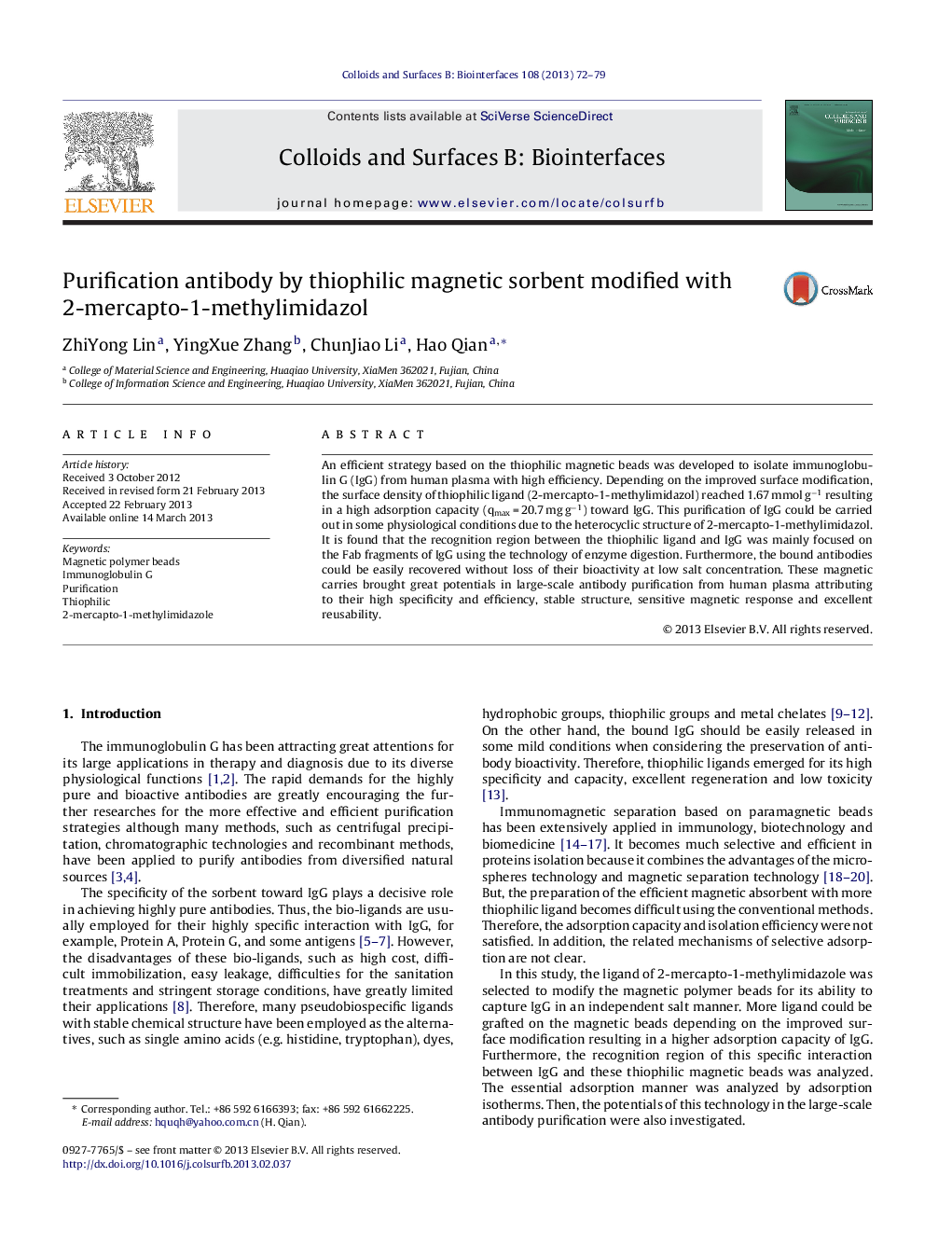| Article ID | Journal | Published Year | Pages | File Type |
|---|---|---|---|---|
| 600160 | Colloids and Surfaces B: Biointerfaces | 2013 | 8 Pages |
•The magnetic beads were effectively modified with 2-mercapto-1-methylimidazol.•IgG could be effectively purified by this magnetic sorbent with high purity.•The recognition region between the sorbent and IgG was revealed.•The bound antibody could be easily released in mild conditions.•The excellent reusability of magnetic beads makes this technology more efficient.
An efficient strategy based on the thiophilic magnetic beads was developed to isolate immunoglobulin G (IgG) from human plasma with high efficiency. Depending on the improved surface modification, the surface density of thiophilic ligand (2-mercapto-1-methylimidazol) reached 1.67 mmol g−1 resulting in a high adsorption capacity (qmax = 20.7 mg g−1) toward IgG. This purification of IgG could be carried out in some physiological conditions due to the heterocyclic structure of 2-mercapto-1-methylimidazol. It is found that the recognition region between the thiophilic ligand and IgG was mainly focused on the Fab fragments of IgG using the technology of enzyme digestion. Furthermore, the bound antibodies could be easily recovered without loss of their bioactivity at low salt concentration. These magnetic carries brought great potentials in large-scale antibody purification from human plasma attributing to their high specificity and efficiency, stable structure, sensitive magnetic response and excellent reusability.
Graphical abstractFigure optionsDownload full-size imageDownload as PowerPoint slide
